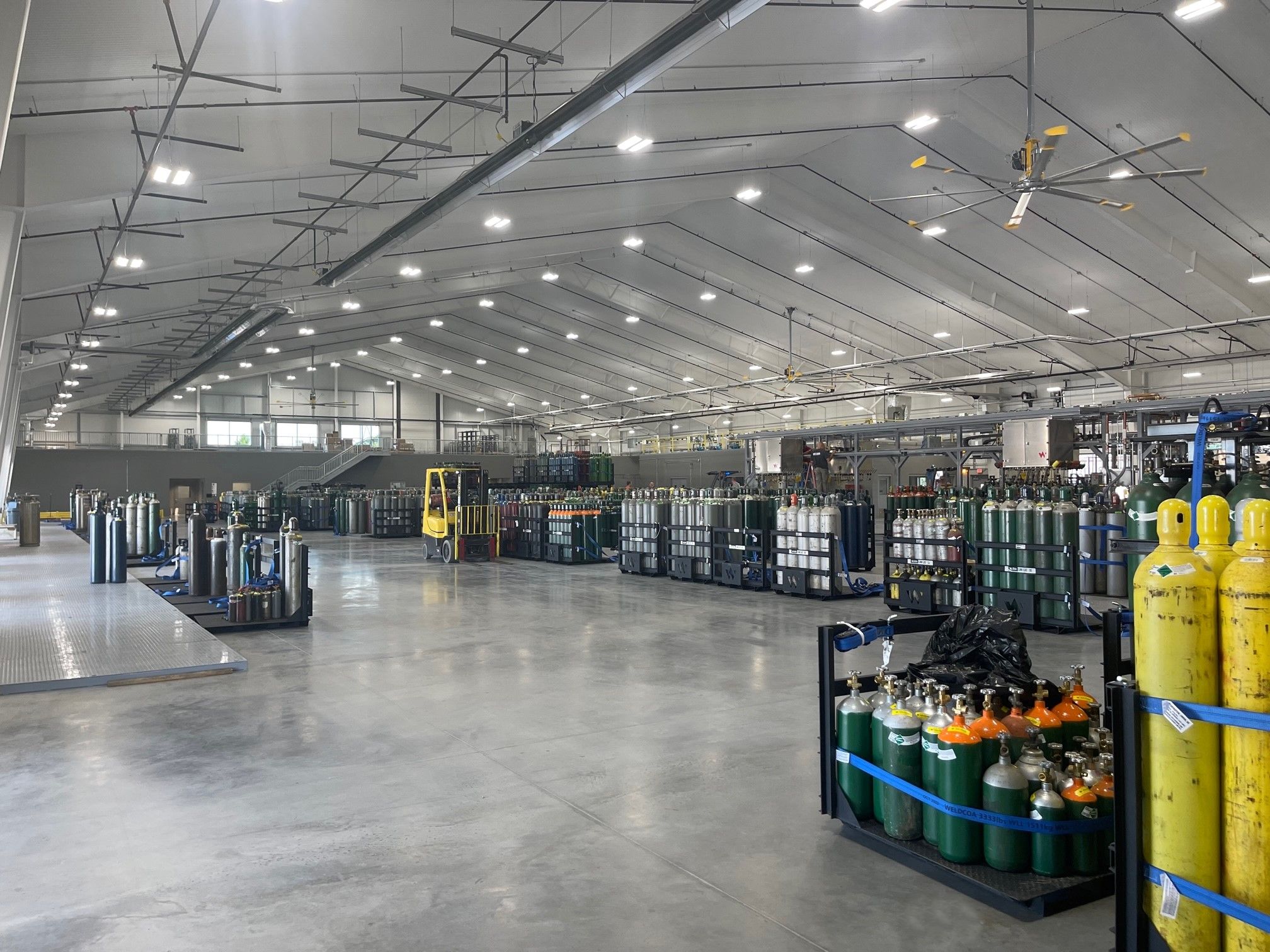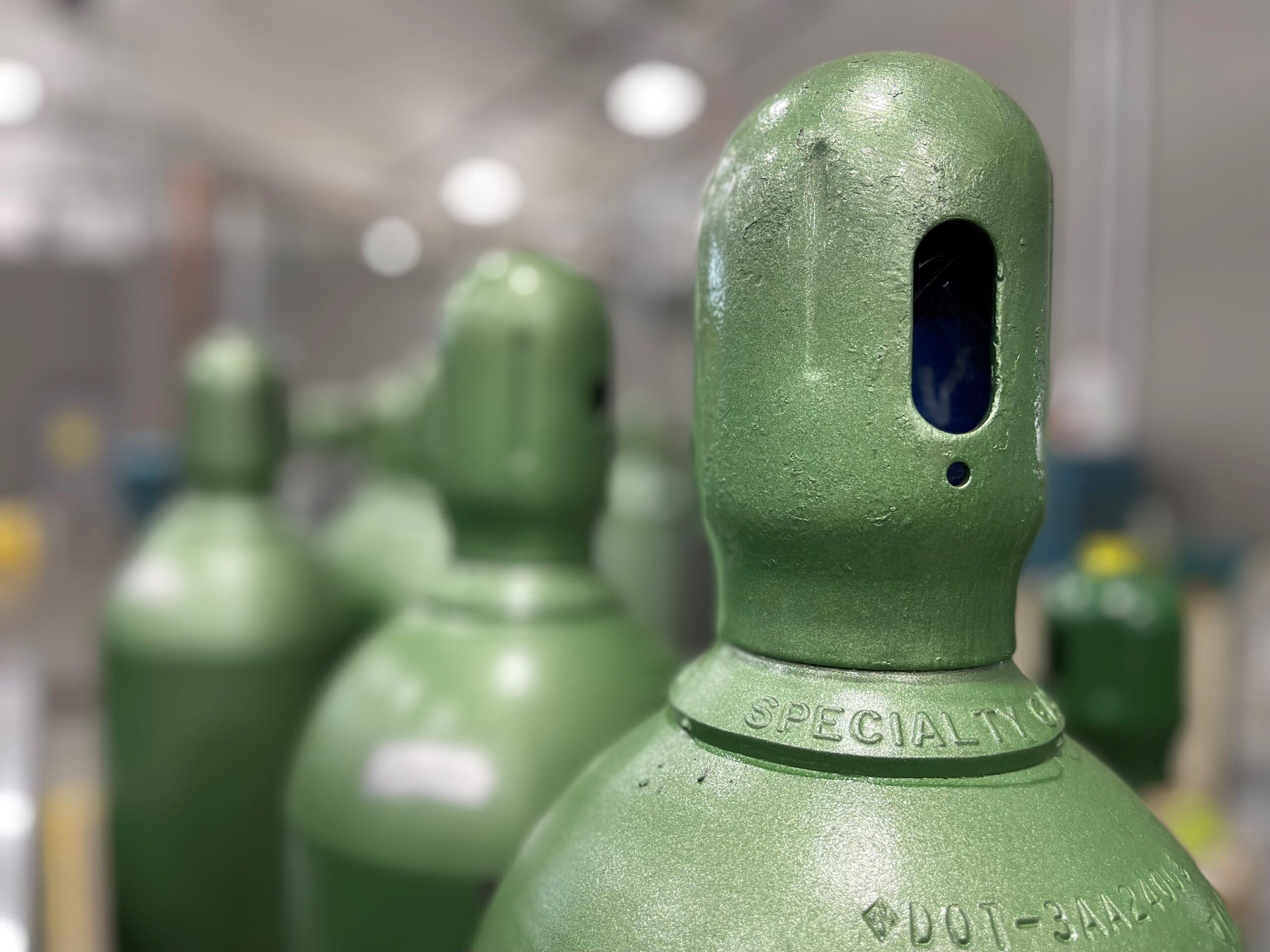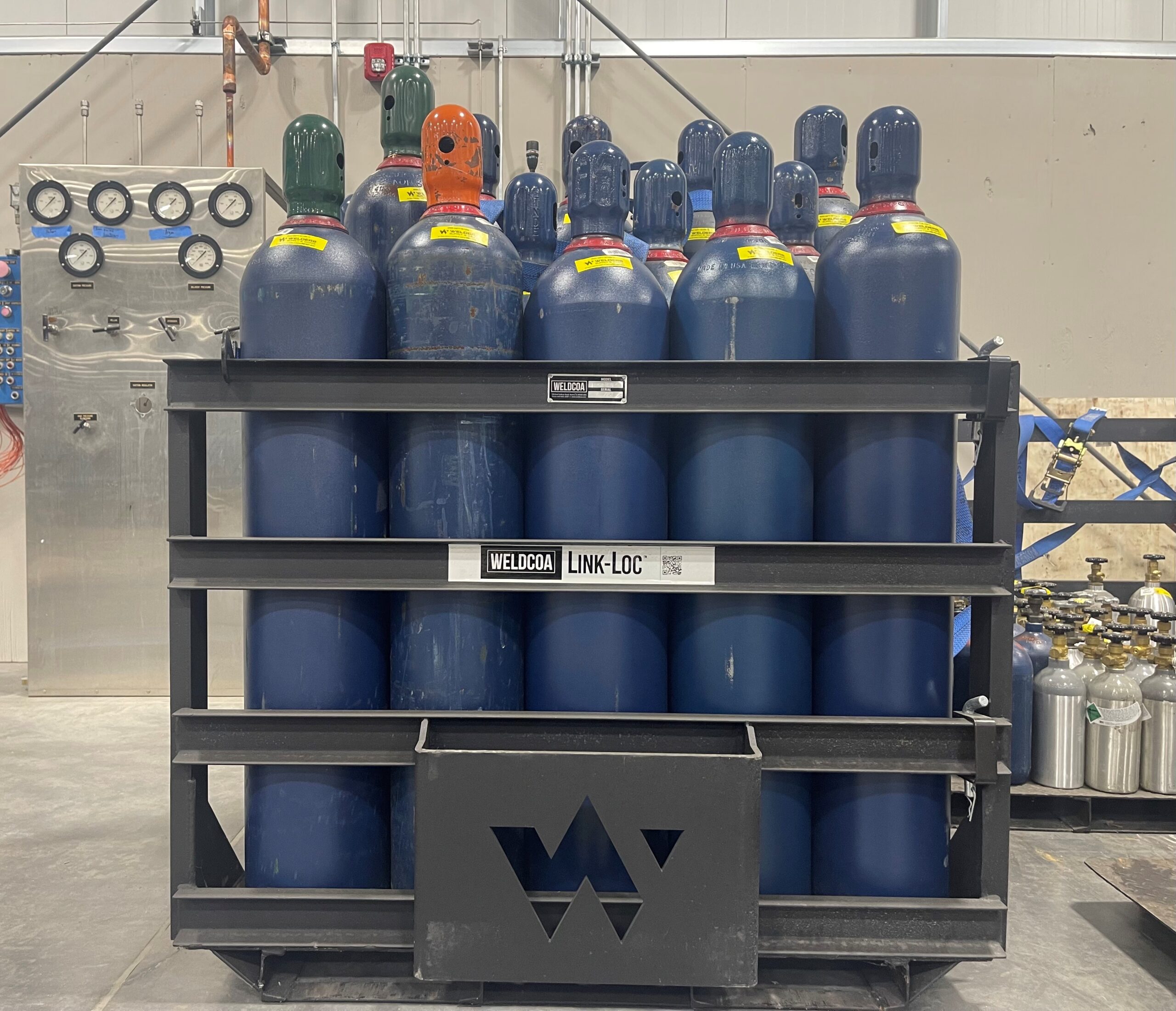
LOCAL AVAILABILITY OF SPECIALTY GASES – PURE GAS AND MIXES
Welders Supply's in-house specialty gas laboratory manufactures and packages extra high purity gases, extra high pressure cylinder gases, and gas mixtures to your exact specifications.
Our specialty gases laboratory uses high accuracy scales combined with state-of-the-art cylinder preparation techniques to ensure accurate and stable mixtures. Welders Supply is able to respond to customer demands for unusual gas products and mixtures.
Common Specialty Gases:
- Laboratory Gases
- Calibration Gases
- Clinical Gases
- Laser Mixtures
- EPA Protocols
- Emission Gases
- Research Gases
- High Purity Regulation Equipment
We offer certified multi-component mixtures in the low part per million range. Our analytic methods include specialty gases and liquid chromatography, infrared, paramagnetic, chemiluminescence, and gravimetric methods.
Pure Gases
We obtain the highest purity liquids available and fill our specially prepared cylinders. To insure that no impurities are introduced, we fill these cylinders using stainless steel piping and diaphragm packed valves. The cylinder of gas is then tested for trace hydrocarbons, trace oxygen and moisture. Further contamination analysis for the higher purity gases is done in our gas chromatograph.
Certification is available if requested. Also, aluminum cylinders are available.
Stock Products:
- Air, all grades
- Carbon Monoxide, Tech. & CP Grades
- Ethane
- Ethylene
- Helium
- Hydrogen, all grade
- Methane, CP, UHP
- Oxygen, Zero & Aviators grades
- Propane, Instrument grades
- P-5 & P-10 Mixes
- 6000 PSI cylinders of Argon, Helium, and Nitrogen
Mixed Gases
We provide analyzed mixtures of the above gases, in most common industry standard cylinders.
Levels of Certification (Standards of Specialty Gases)
There are 3 basic standards for mixture tolerances:
- Primary
- Certified
- Unanalyzed
We also offer EPA Protocol and NIST traceable mixtures.
Primary Standards – This is generally used when the highest accuracy and reliability is demanded. These are prepared on a very accurate balance. Depending upon the components and quantities accuracy can be to 4 places. These mixtures are recommended for critical calibrations and testing.
A signed certificate of analysis is supplied, which includes statements of traceability to NIST and evaluated accuracy. Multicomponent and non-catalog Primary standard gases are available on request.
Certified Standards – By far the most common type of standard. This standard is prepared in the lab and analyzed against lab standards by using various analytic techniques such as Gas Chromatography, Infrared, etc.
Tighter blend tolerances and analytical accuracy, as well as a signed certificate of analysis are available upon request.
Unanalyzed Mixture – A blending of components with no actual statement of analysis. These mixtures are used in applications which do not require analytical verification of component concentrations.
Blend Tolerance
Blend tolerance is the range that the minor components will fall into.
- For example, a customer may order a mixture of 5% Oxygen and balance nitrogen. If the “Blend Tolerance” is 10% then the customer will get between 4.5% – 5.5% Oxygen, balance Nitrogen. The statement of analysis will provide the exact blend percentage.
- Relative Tolerance – If the customer specifies the blend to be + or – x% of component then the blend tolerance is a relative tolerance. For example, a customer may order + or – 2% of component on an order for mixture of 5% CO2, balance Nitrogen. This means the blend tolerance is 4.9% – 5.1% CO2; figured as .02 x 5% = .1%.
- Absolute Tolerance – If the customer specifies the blend to + or – x% absolute then the blend tolerance is an absolute tolerance. For example, a customer may order + or – 2% absolute on an order for mixture of CO2, balance Nitrogen. This means the CO2 will be in the range of 4.98% – 5.02%, figured as 5% + or – .02.
Analytical Accuracy
Analytical Accuracy is also known as Certification Tolerance. It describes how accurately the mixture was analyzed, or how accurate the preparation was. Analytical Accuracy varies with the type of components and their volume in the mixture.
Traceability
NIST: This is the National Institute of Standards and Technology, formerly known as the NBS or National Bureau of Standards. There are a number of specialty gases sold by the NIST. These mostly deal with environmental issues such as Vehicle Exhaust Testing. The standards each have a number, Example “1680B”. The lab doing the certification to NIST 1680B would have to possess the standard, use it to calibrate the analytic instrument, and provide documentation on the statement of analysis. SRM: Standard Reference Material, This term is used to describe a NIST material. Traceability to NIST class S weights: For a large range of requested gas standards there are no NIST gas standards available. The analysis is referenced to highly accurate & costly Class S weights used in conjunction with a gas cylinder balance. This type of preparation can result in 4 decimal place accuracy.
Reactivity & Stability
These two terms come into focus when dealing with reactive & unstable compounds. Some examples of these are Sulphur Dioxide, Nitric Oxide, Hydrogen Sulphide, Ammonia, Low ppm Carbon Monoxide. This type of compound, especially when in the low concentrations, have a tendency to react with the cylinder walls, valves, or balance gas. The only assurance that we have as a producer is to blend and analyze the mixture, wait a number of days, repeat the analysis and compare results. If the concentration remains the same the mixture is said to be stable. As a general rule of thumb, the lower the concentration of a reactive compound, the shorter the Stable life.
Contact Us today with any questions!




